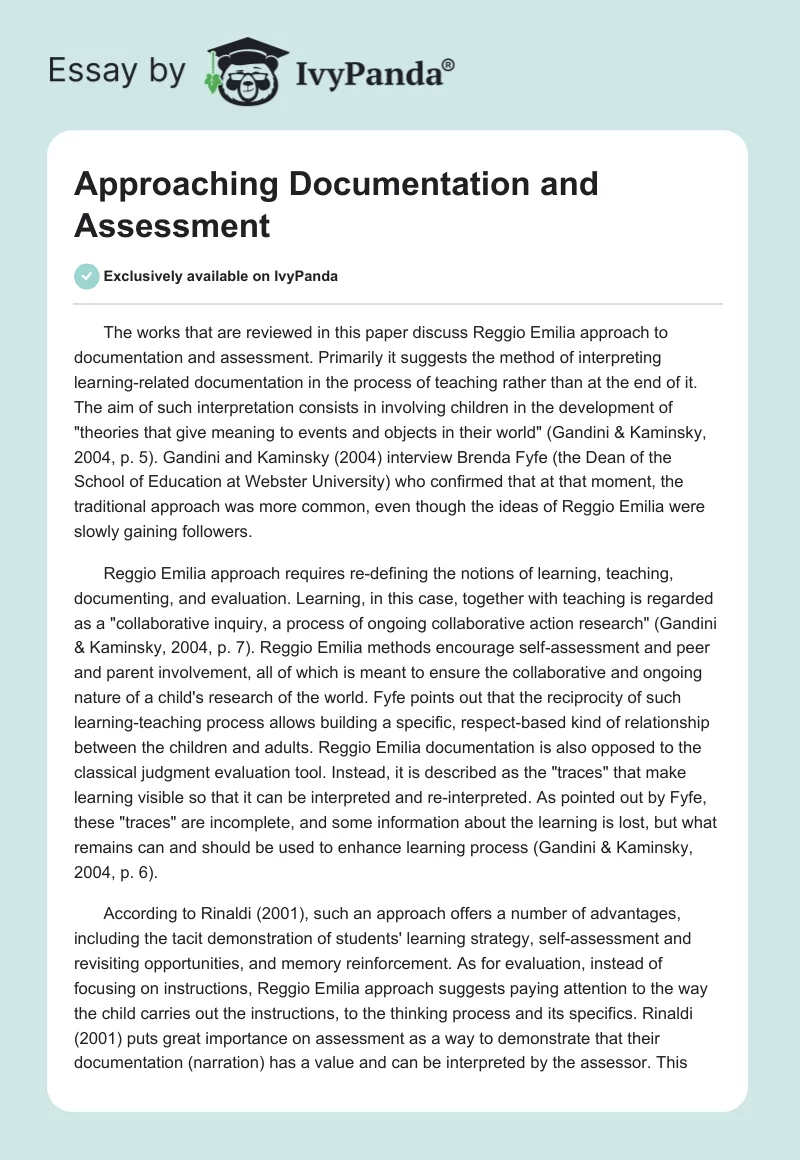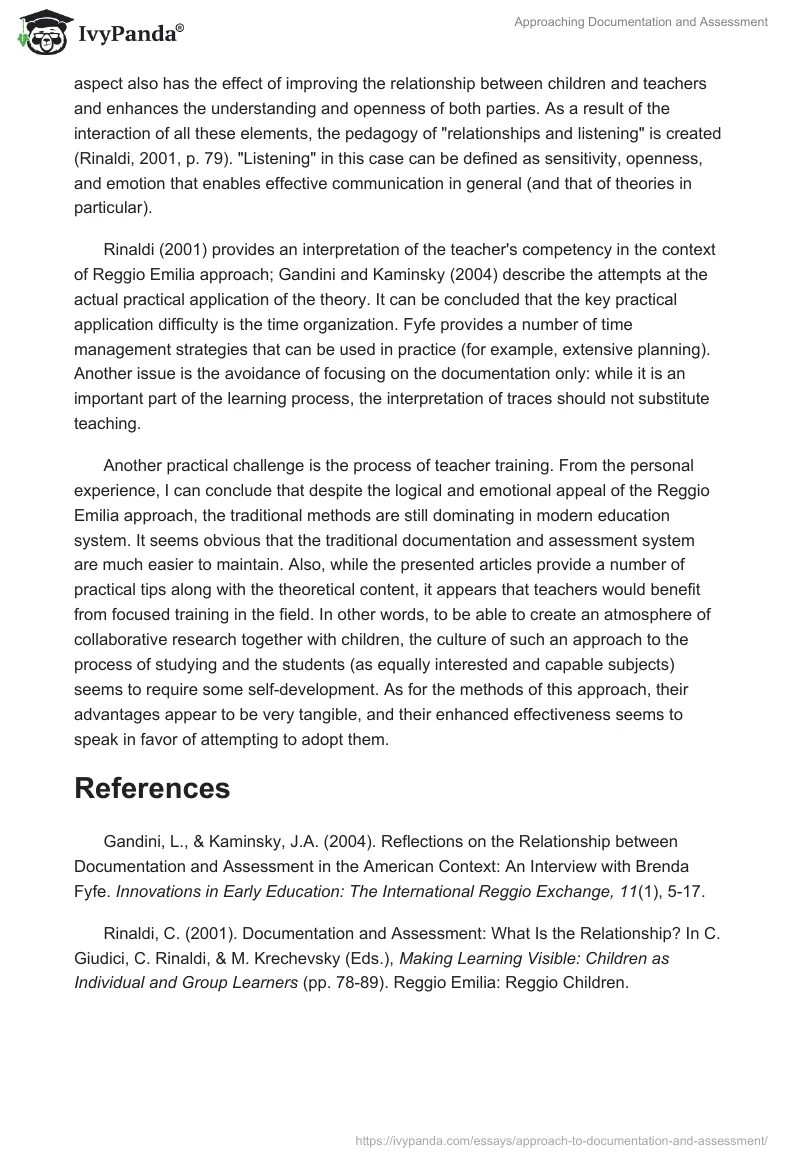The works that are reviewed in this paper discuss Reggio Emilia approach to documentation and assessment. Primarily it suggests the method of interpreting learning-related documentation in the process of teaching rather than at the end of it. The aim of such interpretation consists in involving children in the development of “theories that give meaning to events and objects in their world” (Gandini & Kaminsky, 2004, p. 5). Gandini and Kaminsky (2004) interview Brenda Fyfe (the Dean of the School of Education at Webster University) who confirmed that at that moment, the traditional approach was more common, even though the ideas of Reggio Emilia were slowly gaining followers.
Reggio Emilia approach requires re-defining the notions of learning, teaching, documenting, and evaluation. Learning, in this case, together with teaching is regarded as a “collaborative inquiry, a process of ongoing collaborative action research” (Gandini & Kaminsky, 2004, p. 7). Reggio Emilia methods encourage self-assessment and peer and parent involvement, all of which is meant to ensure the collaborative and ongoing nature of a child’s research of the world. Fyfe points out that the reciprocity of such learning-teaching process allows building a specific, respect-based kind of relationship between the children and adults. Reggio Emilia documentation is also opposed to the classical judgment evaluation tool. Instead, it is described as the “traces” that make learning visible so that it can be interpreted and re-interpreted. As pointed out by Fyfe, these “traces” are incomplete, and some information about the learning is lost, but what remains can and should be used to enhance learning process (Gandini & Kaminsky, 2004, p. 6).
According to Rinaldi (2001), such an approach offers a number of advantages, including the tacit demonstration of students’ learning strategy, self-assessment and revisiting opportunities, and memory reinforcement. As for evaluation, instead of focusing on instructions, Reggio Emilia approach suggests paying attention to the way the child carries out the instructions, to the thinking process and its specifics. Rinaldi (2001) puts great importance on assessment as a way to demonstrate that their documentation (narration) has a value and can be interpreted by the assessor. This aspect also has the effect of improving the relationship between children and teachers and enhances the understanding and openness of both parties. As a result of the interaction of all these elements, the pedagogy of “relationships and listening” is created (Rinaldi, 2001, p. 79). “Listening” in this case can be defined as sensitivity, openness, and emotion that enables effective communication in general (and that of theories in particular).
Rinaldi (2001) provides an interpretation of the teacher’s competency in the context of Reggio Emilia approach; Gandini and Kaminsky (2004) describe the attempts at the actual practical application of the theory. It can be concluded that the key practical application difficulty is the time organization. Fyfe provides a number of time management strategies that can be used in practice (for example, extensive planning). Another issue is the avoidance of focusing on the documentation only: while it is an important part of the learning process, the interpretation of traces should not substitute teaching.
Another practical challenge is the process of teacher training. From the personal experience, I can conclude that despite the logical and emotional appeal of the Reggio Emilia approach, the traditional methods are still dominating in modern education system. It seems obvious that the traditional documentation and assessment system are much easier to maintain. Also, while the presented articles provide a number of practical tips along with the theoretical content, it appears that teachers would benefit from focused training in the field. In other words, to be able to create an atmosphere of collaborative research together with children, the culture of such an approach to the process of studying and the students (as equally interested and capable subjects) seems to require some self-development. As for the methods of this approach, their advantages appear to be very tangible, and their enhanced effectiveness seems to speak in favor of attempting to adopt them.
References
Gandini, L., & Kaminsky, J.A. (2004). Reflections on the Relationship between Documentation and Assessment in the American Context: An Interview with Brenda Fyfe. Innovations in Early Education: The International Reggio Exchange, 11(1), 5-17.
Rinaldi, C. (2001). Documentation and Assessment: What Is the Relationship? In C. Giudici, C. Rinaldi, & M. Krechevsky (Eds.), Making Learning Visible: Children as Individual and Group Learners (pp. 78-89). Reggio Emilia: Reggio Children.


